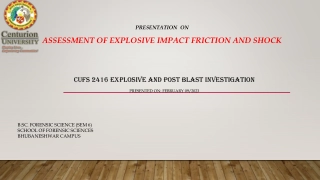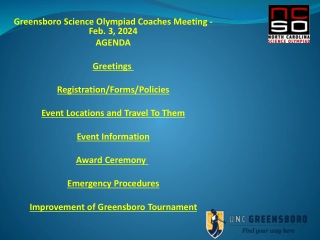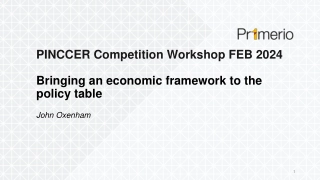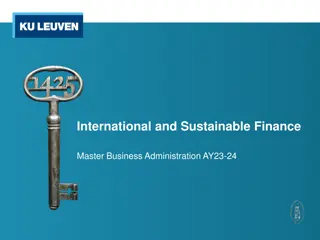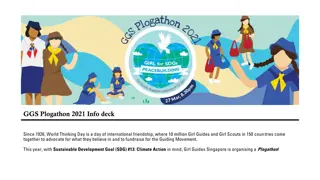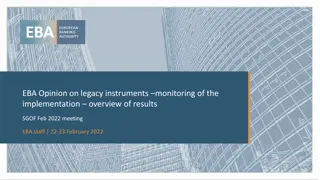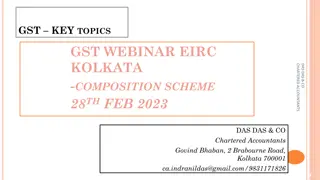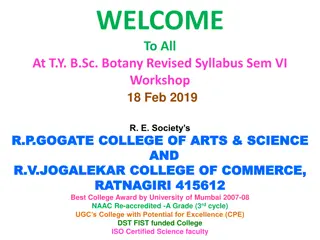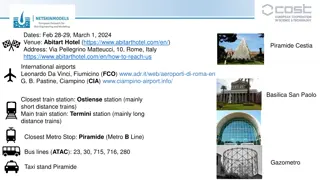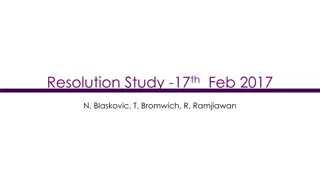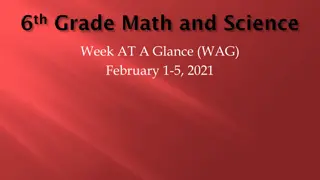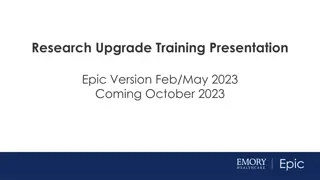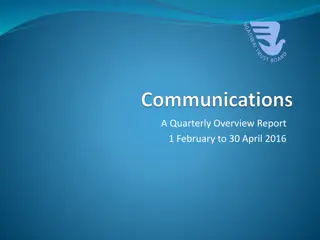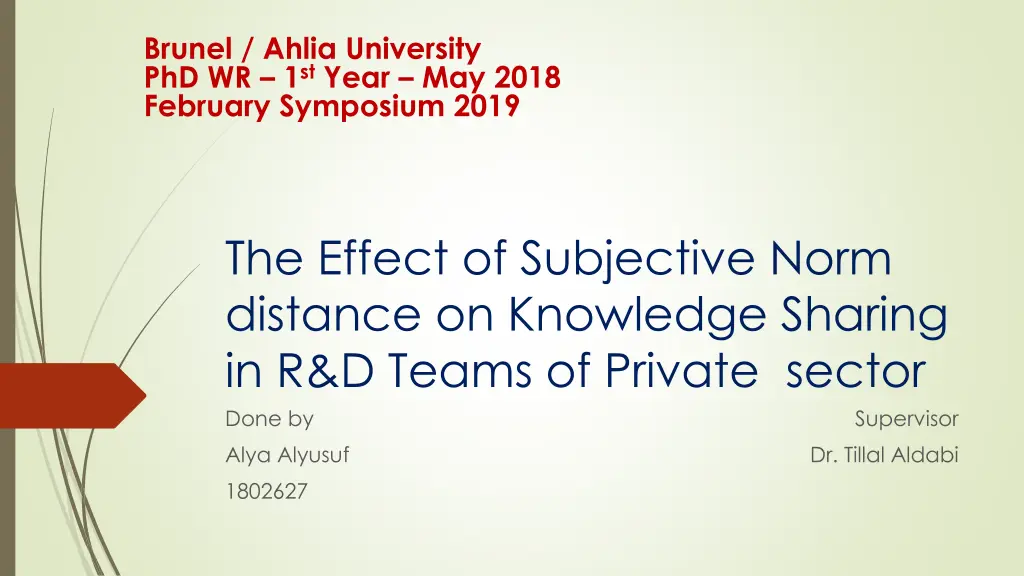
Impact of Subjective Norm Distance on Knowledge Sharing in R&D Teams of Private Sector
Investigate the impact of subjective norm distance on knowledge sharing effectiveness within R&D teams. The study explores relational context factors, theoretical models, and proposed hypotheses to understand knowledge transfer dynamics. Click to delve into the complexities of knowledge sharing within organizational boundaries.
Download Presentation

Please find below an Image/Link to download the presentation.
The content on the website is provided AS IS for your information and personal use only. It may not be sold, licensed, or shared on other websites without obtaining consent from the author. If you encounter any issues during the download, it is possible that the publisher has removed the file from their server.
You are allowed to download the files provided on this website for personal or commercial use, subject to the condition that they are used lawfully. All files are the property of their respective owners.
The content on the website is provided AS IS for your information and personal use only. It may not be sold, licensed, or shared on other websites without obtaining consent from the author.
E N D
Presentation Transcript
Brunel / Ahlia University PhD WR 1st Year May 2018 February Symposium 2019 The Effect of Subjective Norm distance on Knowledge Sharing in R&D Teams of Private sector Done by Alya Alyusuf 1802627 Supervisor Dr. Tillal Aldabi
Introduction To Share or not to Share? not
Knowledge Sharing T&E ORG-Develop Human Capital (KSM) Boundaries Barriers Enablers Personal Personal Value diversified Team IT&Resources T& Intangable
Learning Capability: Few developed it, many have not.. Unless shared across a boundary (Ulrich&Glinow, 1993)
Theories Theory of planned behavior (TPB) model (Ajzen,1991): Suggests that there are three factors, namely, attitudes, subjective norms, and perceived behavioral control, which form behavioral intention, sequentially predicting the actual. Dey and Mukhopadhaya (2018). An extension of the TRA Theory of reasoned action (Fishbein & Ajzen, 1977): Assumes that behavioral intention is the most important determinant of behavior Dey and Mukhopadhaya (2018)
Studies Relational context factors affecting KSB (Distances) (Cummings and Teng, 2003) C1342 (Dey & Mukhopadhyay, 2018) Proposed 2 factors in Public SU - Managers Knowledge distance Norm distance Hypothesis: Relational context has a negative influence on KSB Findings: rejected, i.e. the relational context (K&N) has negative but insignificant effect on KSB. Partially supports Cummings & Teng, (2003), and KSI has positive effect on KSB. When considered with Contex.F & KSM K should have partially overlap and reasonable distance N (Hoarding K) Proposed 4 factors to define relational context of KT in R&D Org s distance Physical distance Knowledge distance Norm* distance cultural & Value- B Hypothesis: Transfer success decreases as norm distance between source and recipient increases Findings: the greater the norm distance, the least the KT *defines what is acceptable & un.
Linkage between contextual factors, KS mediums, and behavior: moderating effect of knowledge sharing intentions (Dey & Mukhopadhyay, 2018) Research Model ) Contextual Factors Proposed Model adding 1.Subjective Norm s Distance Theory of planned behavior (Ajzen 1991) Env. context K. context Relational context (Distances) Knowledge Norms (cultural & Value system based) Knowledge sharing behavior (KSB) Source & Recipient context Knowledge sharing intentions (KSI) 2. Intrinsic Motivation as a moderator Knowledge- Sharing Mediums (KSM) (one-2-one - Tacit) Doc - Explicit
CALL FOR (Cummings and Teng, 2003) Research on factors affecting KT (Dey & Mukhopadhyay, 2018) Examining the macro level personality traits that affect KS Extend empirical model with more determinants (Gharawi & Dawes, 2018) Whether less distance on some dimensions affects wider distances. Address measurement in a more structured way Paulin and Suneson (2015) Riege (2005; 2007) Little attention on KS barriers although negative effect on KM..
Conclusion IM SND To investigate the effect of subjective norm distance on KSB To examine IM as a moderator of the relation Study Objectives
References Dey, T. and Mukhopadhyay, S., 2018. Linkage between contextual factors, knowledge sharing mediums, and behaviour: Moderating effect of knowledge sharing intentions. Knowledge and Process Management, 25(1), pp.31-40. Cummings, J.L. & Teng, B. 2003, "Transferring R&D knowledge: the key factors affecting knowledge transfer success", Journal of Engineering and Technology Management, vol. 20, no. 1, pp. 39-68. Tang, C. & Naumann, S.E. 2016, "Team diversity, mood, and team creativity: The role of team knowledge sharing in Chinese R & D teams", Journal of Management & Organization, vol. 22, no. 3, pp. 420-434. Paulin, D. and Suneson, K., 2015. Knowledge transfer, knowledge sharing and knowledge barriers three blurry terms in KM. Leading Issues in Knowledge Management, Volume Two, 2, pp.73-94. Hsu, I.C., 2008. Knowledge sharing practices as a facilitating factor for improving organizational performance through human capital: A preliminary test. Expert Systems with applications, 35(3), pp.1316-1326. Ulrich, D., Jick, T. and Von Glinow, M.A., 1993. High-impact learning: Building and diffusing learning capability. Organizational dynamics, 22(2), pp.52-66. Gharawi, M.A. and Dawes, S.S., 2013, January. Exploring the influence of contextual distances on transnational public sector knowledge networks: A comparative study of AIRNow-I Shanghai and the Hajj-MDSS initiatives. In 2013 46th Hawaii International Conference on System Sciences (pp. 1714-1723). IEEE.

